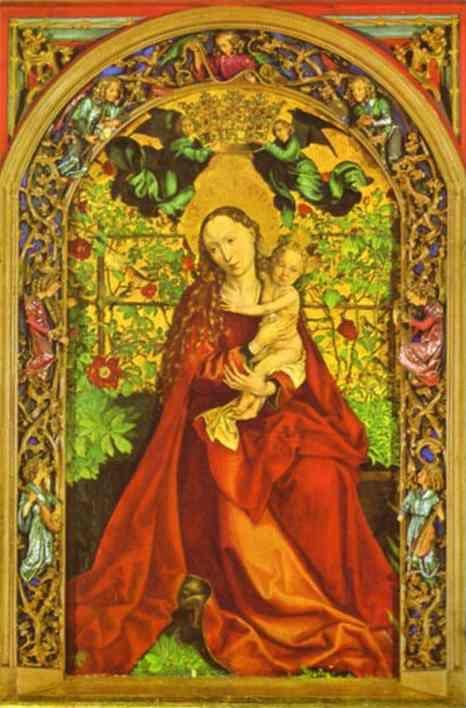Martin Schongauer Biography
The family name of Shoungauers probably derives from the town of Schongau, although from 1329 the family is documented in Augsburg, where they were members of the gentry. Caspar Schongauer, a well-known goldsmith, moved from Augsburg to Colmar in 1445. He had 5 sons, three of them became gold- and silversmiths, and two, Martin and Ludwig, engravers and painters. It is known that first Martin was sent to Leipzig to study at the university; he subsequently returned to his father’s workshop, where he learned the engraving and drawing. Only then did he go on to train as a painter, probably under Caspar Isenmann in Colmar. Later he traveled to the Netherlands, where he must have been profoundly influenced by the works of
Rogier van der Weyden and his followers.
Martin Schongauer is the most important engraver and draughtsman in German art before Dürer. So far about 115 copper engravings and 52 drawings by him have been authenticated. His designs greatly influenced the development of German art.
Schongauer’s painting is characterized by his mastery of the fine detail, primarily rendered through fanciful line. In this he follows the general trend in European art in the 1470s and 1480s. Most of his painted works are not authenticated or precisely datable. Although he painted prolifically, he had a busy workshop, specialized in altarpieces and small religious paintings, only a few of his canvases survived. Of these his masterpiece is Madonna of the Rose Bower, also known as Virgin and Child in a Rose Garden, a monumental sensitive altarpiece, executed in 1473 for the Church of Saint Martin in Colmar.
Bibliography
Painting of Europe. XIII-XX centuries. Encyclopedic Dictionary. Moscow. Iskusstvo. 1999.
- Madonna Of The Rose Bower.

1473. Tempera on wood. Saint-Martin Church, Colmar, France.